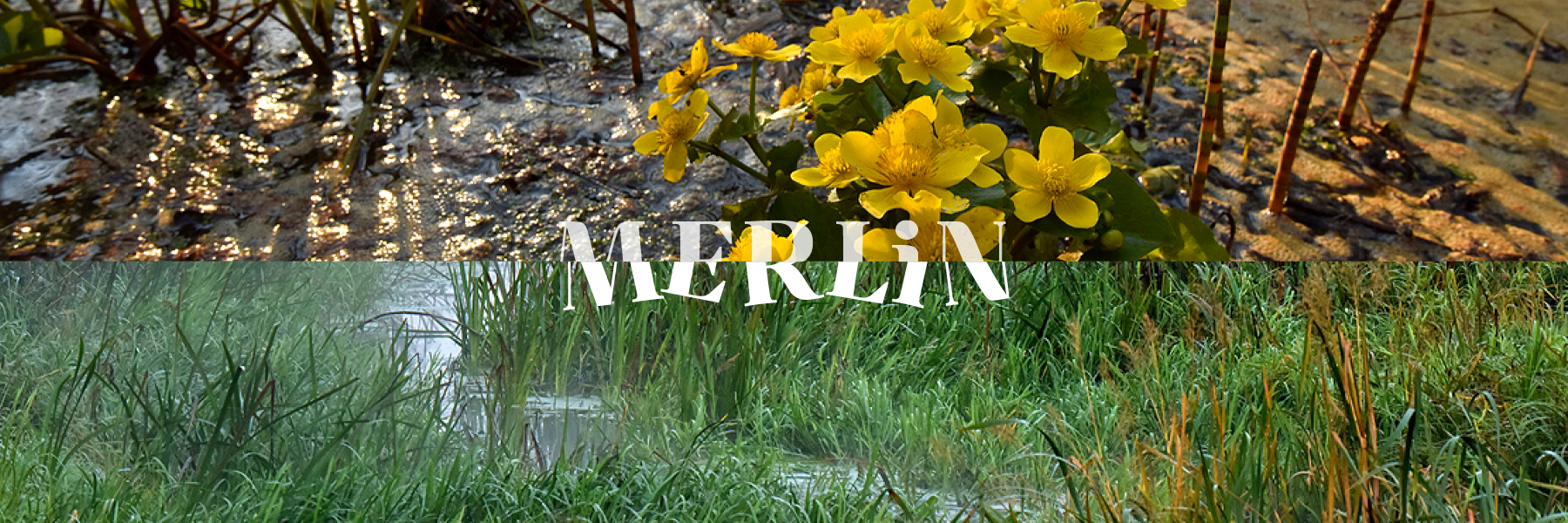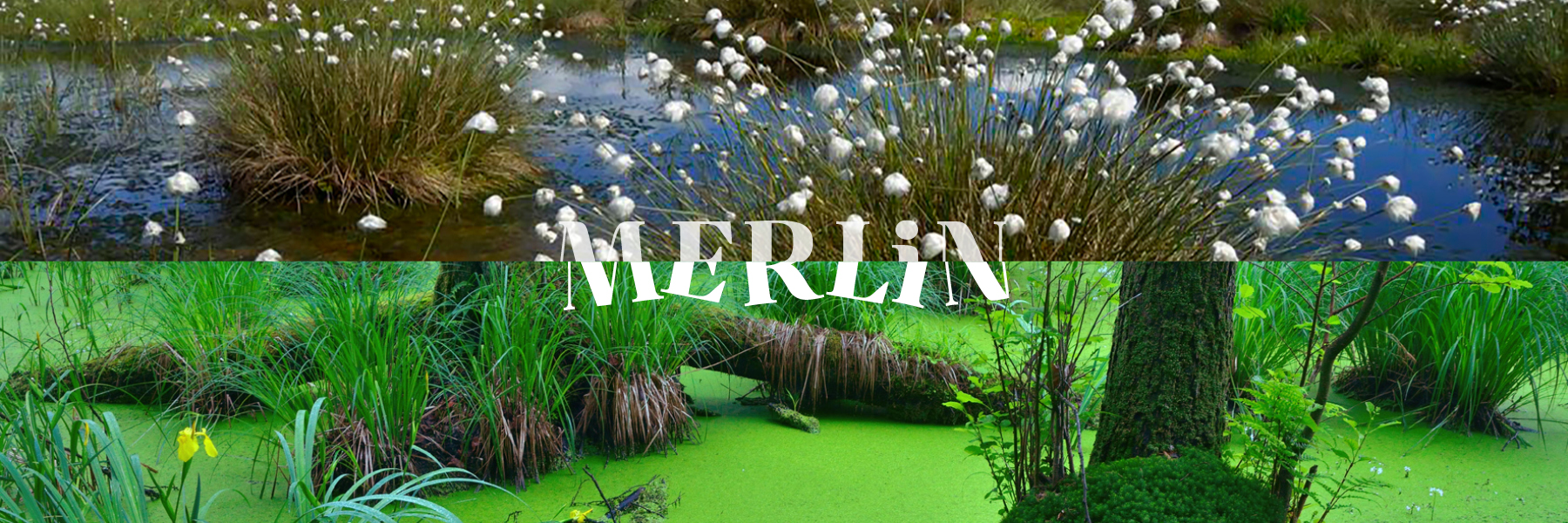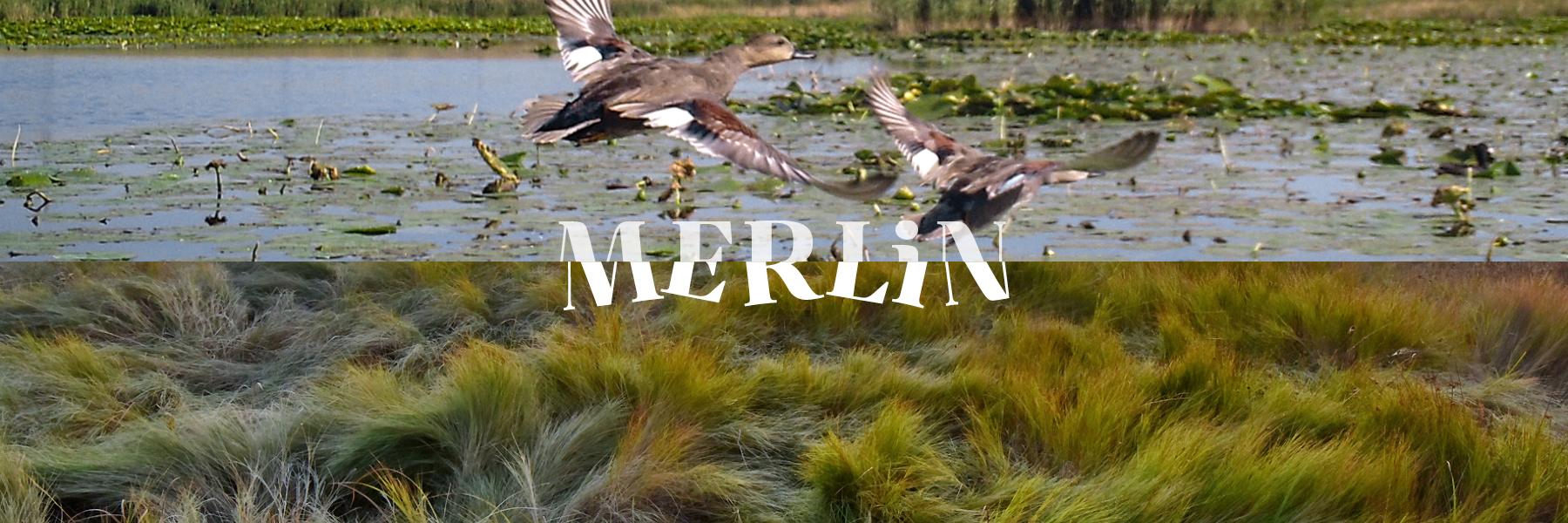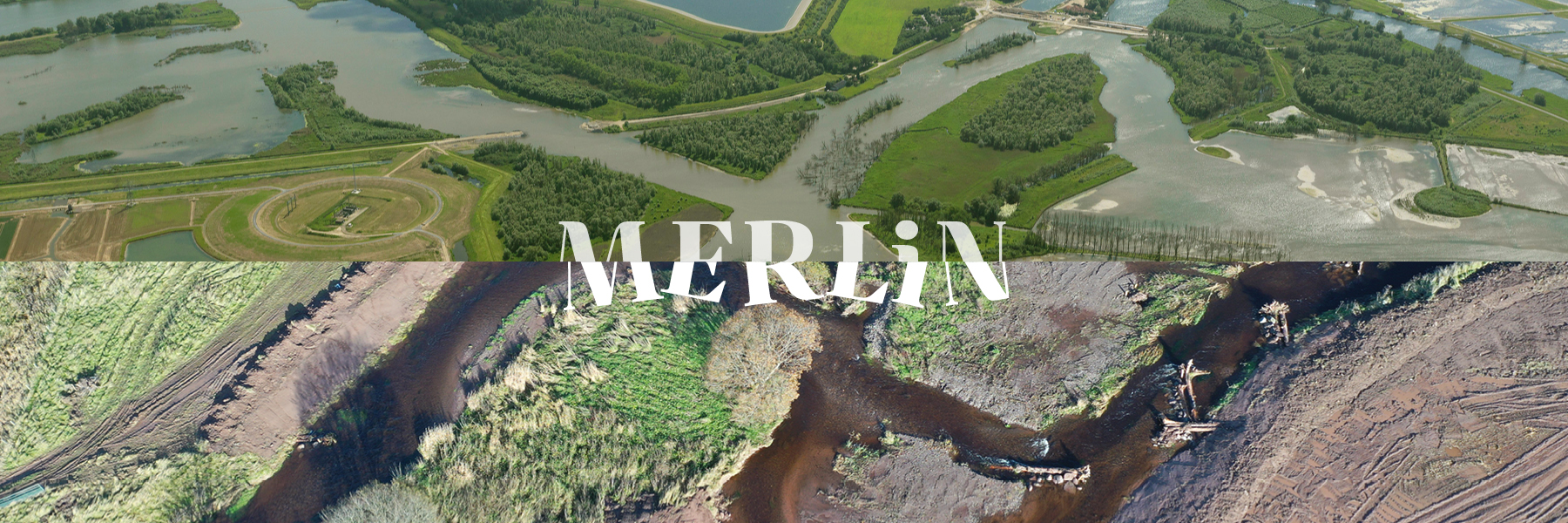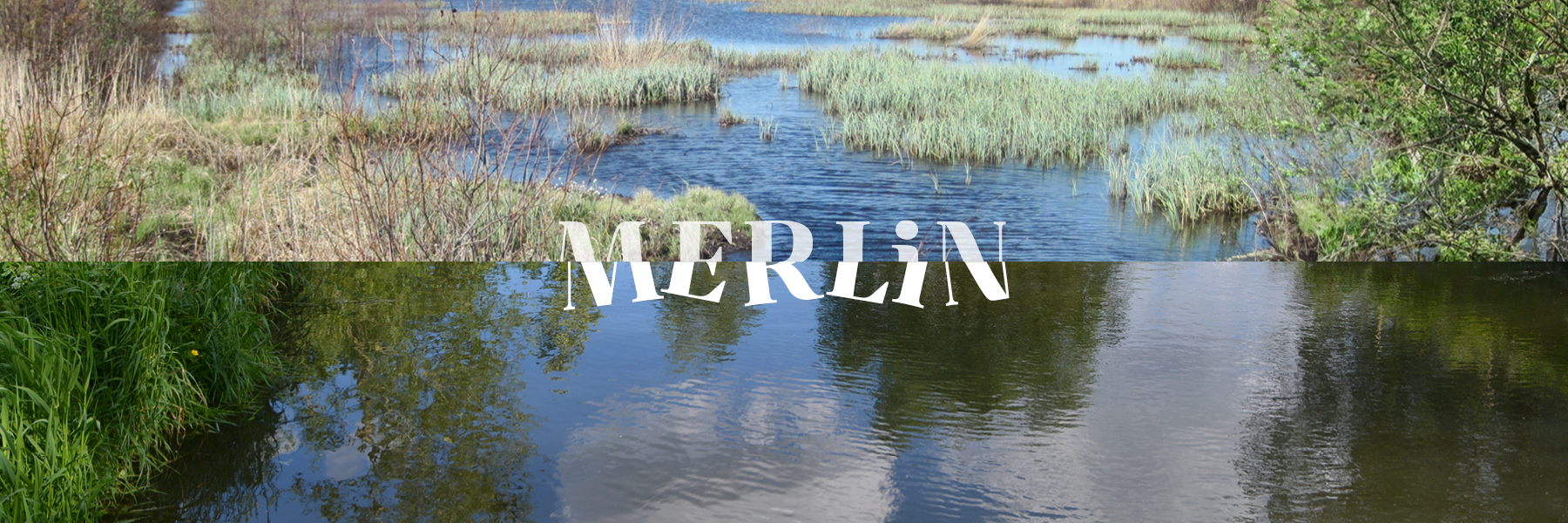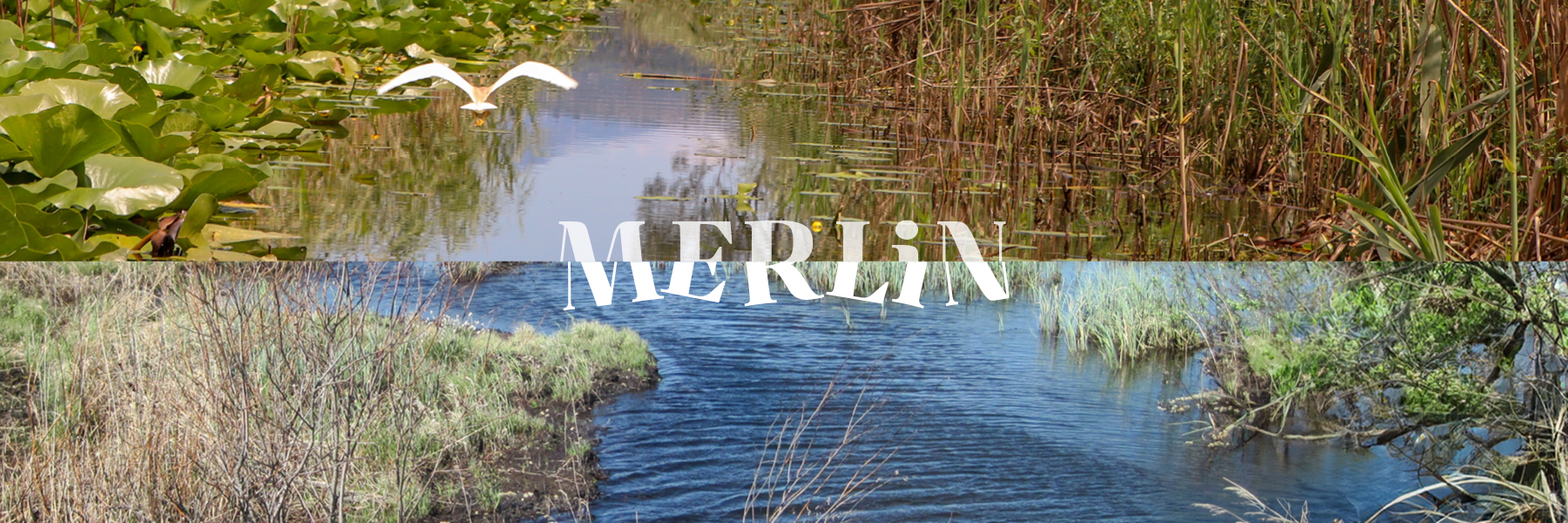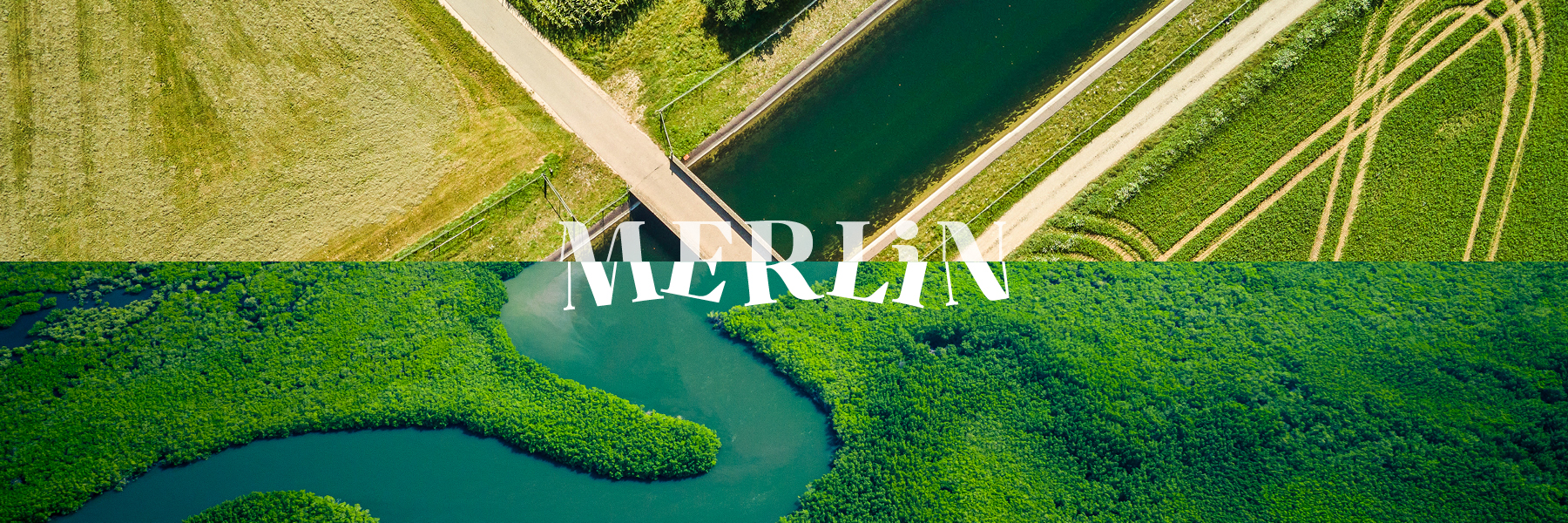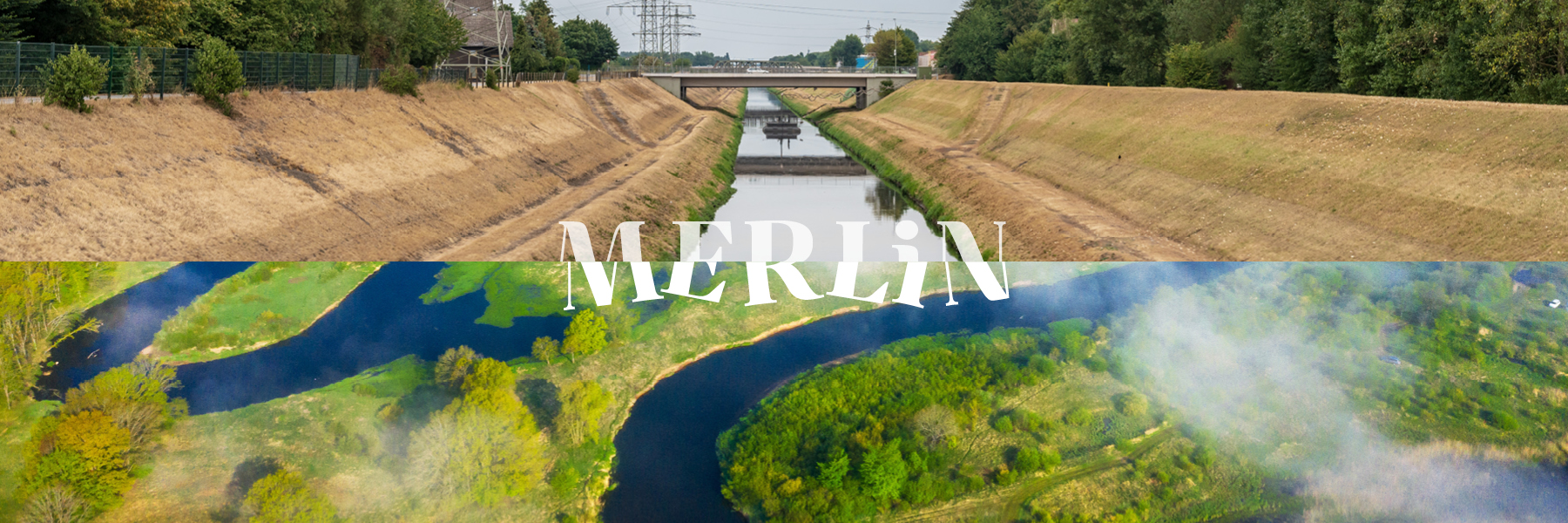Academic Publications
2024
Garcia, X., Estrada, L., Llorente, O., Acuña, V. (2024)
Assessing small hydropower viability in water-scarce regions: environmental flow and climate change impacts using a SWAT+ based tool.
Environmental Sciences Europe 36, 126. https://doi.org/10.1186/s12302-024-00938-1
Water-scarce regions, like the Mediterranean, face worsening conditions due to climate change, intensifying pressure on key economic sectors such as hydropower. Additionally, environmental conservation policies, particularly the implementation of environmental flows, present challenges for hydropower systems. Certainty regarding the impact of these factors on future hydropower production is crucial for informed decision-making in the transition to sustainable energy. This study introduces S + HydPower, a tool coupled with SWAT+ to assess climate change and watershed management effects on small hydropower plant (SHP) systems. In this study, we used this tool to investigate the consequences of implementing environmental flows and climate change on run-of-river SHPs in the Catalan River Basin District (CRBD), in Catalonia. The results show that applying environmental flows would lead to a significant 27% reduction in SHP production. However, this reduction would represent only 0.25% of the region’s current energy demand. Furthermore, the study reveals a potential 38% to 73% reduction in SHP production by the end of the twenty-first century due to the combined effects of environmental flows and climate change. This suggests a substantial decline in run-of-river SHP’s contribution to the CRBD’s electricity supply. These findings emphasize the need to explore alternative and sustainable energy sources to ensure the long-term reliability and resilience of the region’s energy supply.
Garcia, X., Estrada,L., Saló, J. , Acuña, V. (2024)
Blueing green water from forests as strategy to cope with climate change in water scarce regions: The case of the Catalan river basin District
Journal of Environmental Management, 353, 120249, https://doi.org/10.1016/j.jenvman.2024.120249
Ónodi, G. Czeglédi, I., Erős, T. (2024)
Drivers of the taxonomic and functional structuring of aquatic and terrestrial floodplain bird communities
Landscape Ecology, 39, 174. https://doi.org/10.1007/s10980-024-01948-3
Context
There has been a limited amount of research which comparatively examines the local and landscape scale ecological determinants of the community structure of both riparian and aquatic bird communities in floodplain ecosystems.
Objectives
Here, we quantified the contribution of local habitat structure, land cover and spatial configuration of the sampling sites to the taxonomical and functional structuring of aquatic and terrestrial bird communities in a relatively intact floodplain of the river Danube, Hungary.
Methods
We used the relative abundance of species and foraging guilds as response variables in partial redundancy analyses to determine the relative importance of each variable group.
Results
Local-scale characteristics of the water bodies proved to be less influential than land cover and spatial variables both for aquatic and terrestrial birds and both for taxonomic and foraging guild structures. Purely spatial variables were important determinants, besides purely environmental and the shared proportion of variation explained by environmental and spatial variables. The predictability of community structuring generally increased towards the lowest land cover measurement scales (i.e., 500, 250 or 125 m radius buffers). Different land cover types contributed at each scale, and their importance depended on aquatic vs terrestrial communities.
Conclusions
These results indicate the relatively strong response of floodplain bird communities to land cover and spatial configuration. They also suggest that dispersal dynamics and mass-effect mechanisms are critically important for understanding the structuring of floodplain bird communities, and should therefore be considered by conservation management strategies.
Feng, K., Czeglédi, I., Funk, A., Hein, T., Pont, D., Meulenbroek, P., Preiszner, B., Valentini,A., Erős T. (2024)
Composition, divergence and variability: A comprehensive analysis of fish trait responses to connectivity
Ecological Indicators 167, e112670. https://doi.org/10.1016/j.ecolind.2024.112670
Stoffers, T., Altermatt, F., Baldan, D., Bilous, O., Borgwardt, F., Buijse, A. D., Bondar-Kunze, E., Cid, N., Erős, T., Ferreira, M. T., Funk, A., Haidvogl, G., Hohensinner, S., Kowal, J., Nagelkerke, L. A. J., Neuburg, J., Peller, T., Schmutz, S., Singer, G. A., … Hein, T.(2024)
Reviving Europe's rivers: Seven challenges in the implementation of the Nature Restoration Law to restore free-flowing rivers
WIREs Water 11(3), e1717. https://doi.org/10.1016/j.ecolind.2024.112670
Ghafoor, J., Forio, M.A.E., Nolivos, I., Arias-Hidalgo, M., Goethals, P.L.M. (2024)
Model-based analysis of the impact of climate change on hydrology in the Guayas River basin (Ecuador)
Journal of Water and Climate Change, 15 (10), 5021–5040. https://doi.org/10.2166/wcc.2024.064
Baattrup-Pedersen, A., Friis, K.B., Friberg, N., Riis., T. (2024)
Inter-linkages between in-stream plant diversity and macroinvertebrate community
Hydrobiologia, 852, 235–247. https://doi.org/10.1007/s10750-024-05700-5
Kowal J., Funk A., Unfer G., Baldan D., Haidvogl G., Hauer C., Ferreira M., Branco P., Schinegger R., Hein T.(2024)
River continuum disruptions in a highly altered system: The perspective of potamodromous fish
Ecological Indicators, 164, 112130. https://doi.org/10.1016/j.ecolind.2024.112130
Bondar-Kunze E., Funk A., Hein T., Drexler S., Tschikof M., Tögel R., Scheiblechner U. (2024)
Vernetztes Denken und Handeln für Renaturierungsmaßnahmen an Flüssen und Auen
Wasser und Abfall, 6/2024. https://doi.10.1007/s35152-024-1863-x
Tschikof, M., Stammel, B., Weigelhofer. G., Bondar-Kunze, E., Costea, G,. Pusch, M. (2024)
Cross-scale and integrative prioritization of multi-functionality in large river floodplains
Journal of Environmental Management, 358, 120899. https://doi.org/10.1016/j.jenvman.2024.120899
Recinos Brizuela, S., Funk, A., Tiwari, S., Baldan, D., Hein, T. (2024)
Multilayer networks in landscape ecology: a case study to assess changes in aquatic habitat connectivity for flying and non-flying benthic macroinvertebrates in a Danube floodplain
Landscape Ecology, 39, 186. https://doi.org/10.1007/s10980-024-01975-0
Context
In efforts to mitigate anthropogenic impacts on floodplain biodiversity, restoration measures that enhance habitat connectivity have been applied. However, these approaches have either neglected the spatial position of water bodies or the dynamic nature of the floodplain ecosystem.
Objectives
This study focuses on the novel application of the multilayer network framework to assess changes in the aquatic habitat connectivity in floodplains, showcasing its application in the context of aquatic passive dispersal (drift) of two indicator groups of benthic macroinvertebrates (Oligochaetes and Chironomids)
Methods
Our case study is located in the Donau-Auen National Park in Austria and follows floodplain restoration measures (side-channel reconnection) applied in the mid-1990s. Multilayer networks were constructed to represent the conditions before, short-term, and long-term after restoration to quantify habitat connectivity across inundation frequencies. Our network analyses involved multilayer correlation, static and dynamic monolayer centralities (centrality profiles), and multilayer centrality assessments. We used a Partial Least Squares Regression analysis as a variable selection tool to identify which centrality measures better explained the variance in diversity and Local Contributions to Beta Diversity (LCBD) of benthic macroinvertebrates.
Results
In the short-term, our connectivity analysis indicated an increase in habitat connectivity. However, centrality profiles, multilayer correlation, and multilayer centrality techniques identified a long-term decrease in connectivity. Multilayer centralities had higher Variable Importance in the Projection scores (VIP) than their monolayer counterpart in explaining variations in diversity and LCBD for strict aquatic dispersers. Meanwhile, for flying dispersers, monolayer centralities had the highest VIP scores for explaining diversity.
Conclusions
This study underscores the relevance of integrating dynamic aspects of water-mediated transport beyond traditional pairwise distances. Although in this study we apply this tool by showcasing the aquatic passive dispersal mode, the application of this method can be extended to other dispersal modes and representative abilities for diverse groups of aquatic organisms. The expanding cross-disciplinary applications and open-source tool development for multilayer networks offer practical implications for planning and evaluating management measures.
Sexton, A.N., Beisel, J.-N., Staentzel,C., Wolter, C., Tales, E., Belliard, J., Buijse, A.D., Martínez Fernández, V., Wantzen, K.M., Jähnig, S.C., Garcia de Leaniz, C., Schmidt-Kloiber, A., Haase, P., Forio, M.A.E., Archambaud, G., Fruget, J.-F., Dohet, A., Evtimova, V., Csabai, Z., Floury, M., Goethals, P., Várbiró, G., Cañedo-Argüelles, M., Larrañaga, A., Maire, A., Schäfer, R.B., Sinclair, J.S., Vannevel, R., Welti, E.A.R., Jeliazkov, A. (2024)
Inland navigation and land use interact to impact European freshwater biodiversity
Nature Ecology & Evolution, 8, 1098–1108. https://doi.org/10.1038/s41559-024-02414-8
Inland navigation in Europe is proposed to increase in the coming years, being promoted as a low-carbon form of transport. However, we currently lack knowledge on how this would impact biodiversity at large scales and interact with existing stressors. Here we addressed this knowledge gap by analysing fish and macroinvertebrate community time series across large European rivers comprising 19,592 observations from 4,049 sampling sites spanning the past 32 years. We found ship traffic to be associated with biodiversity declines, that is, loss of fish and macroinvertebrate taxonomic richness, diversity and trait richness. Ship traffic was also associated with increases in taxonomic evenness, which, in concert with richness decreases, was attributed to losses in rare taxa. Ship traffic was especially harmful for benthic taxa and those preferring slow flows. These effects often depended on local land use and riparian degradation. In fish, negative impacts of shipping were highest in urban and agricultural landscapes. Regarding navigation infrastructure, the negative impact of channelization on macroinvertebrates was evident only when riparian degradation was also high. Our results demonstrate the risk of increasing inland navigation on freshwater biodiversity. Integrative waterway management accounting for riparian habitats and landscape characteristics could help to mitigate these impacts.
Colls, M., Arroita, M., Larrañaga, A., Bañares, I., Elosegi, A. (2024)
Differential response of multiple stream ecosystem processes to basin- and reach-scale drivers
Science of the Total Environment, 954, 176653. https://doi.org/10.1016/j.scitotenv.2024.176653
Stream ecosystems are inherently dependent on their surroundings and, thus, highly vulnerable to anthropogenic impacts, which alter both their structure and functioning. Anchored in biologically-mediated processes, the response of stream ecosystem functioning to environmental conditions exhibits intricate patterns, reflecting both natural dynamics and human-induced changes. Our study aimed at determining the natural and anthropogenic drivers influencing multiple stream ecosystems processes (nutrient uptake, biomass accrual, decomposition, and ecosystem metabolism) at a regional scale. By examining 38 natural and anthropogenic variables across 63 stream reaches in Gipuzkoa (northern Iberian Peninsula), we used structural equation modeling to unravel the cascading effect of basin- and reach-scale drivers onto ecosystem process. The results reveal significant variability in ecosystem processes, with contrasting spatial patterns, suggesting that studied processes respond differently to environmental factors. Urban land-use emerged as a primary basin-scale driver, whereas reach-scale variables reflected both natural and anthropogenic influence. Nutrient uptake rates were primarily driven by nutrient concentrations in stream water, but models for biomass accrual, decomposition, and ecosystem metabolism exhibited more complex cause-effect relationships. Our findings highlight the impact of urban areas on multiple ecosystem processes and services, disproportionate when considering their small land cover. The present study emphasizes the convenience of measuring multiple ecosystem functions simultaneously to get a comprehensive diagnosis of the functional status of rivers.
Santos, A., Payne, R., Branco, M., Franco, J.C. (2024)
Impact of tillage intensity and an invasive grass on plant-pollinator networks in riparian agroecosystems
Global Ecology and Conservation, 54, e03149. https://doi.org/10.1016/j.scitotenv.2024.176653
Insects are a main component of a stable ecosystem and influence crop production. Pollinators, in particular, by regulating pollination between flowers, shape and secure plant communities around crop fields. They are also essential for food provisioning by sustaining the pollination of crops. Studies in recent decades have been covering the mixture of effects various factors have on pollinators. However, there is still a gap in understanding how different taxa in pollinator guilds respond to these pressures and how is network structure affected by it. Therefore, here we tried to further uncover the complex relationship between habitat suitability and pollinator biodiversity in an agro-riparian matrix. Using bipartite network analysis and geographical information systems (GIS) in four sites with different land cover configuration, we assessed faunal and floral diversity, land cover differences and network metrics. Hymenoptera were responsible for most of the visits, while also exhibiting higher levels of richness across sites. Lepidoptera on the other hand, were the order less represented. Overall, tillage intensity and Arundo donax were determinant in differences in the number of visits for both orders, with Diptera and Coleoptera being less affected. However, results regarding visitation rates reported tillage’s higher explanatory power, in comparison with A. donax. Intensive sites showed significantly higher levels of nestedness and lower specialization and diversity across taxa. The results suggest that intensive agriculture and exotic species infestation can impact pollinator taxa differently, thus influencing network structure. By scoping network metrics, we can better determine what species are more affected by agricultural expansion, assess ecosystem resilience and consequently, determine appropriate conservation measures to maintain stable plant-pollinator networks.
Kowal, J., Funk, A., Unfer, G., Baldan, D., Haidvogl, G., Hauer, C., Ferreira, M., Branco, P., Schinegger, R., Hein, T. (2024)
River continuum disruptions in a highly altered system: The perspective of potamodromous
Ecological Indicators, 164, 112130. https://doi.org/10.1016/j.ecolind.2024.112130
In this study, we explored how barriers such as dams have affected the longitudinal connectivity of riverine habitats from the perspective of potamodromous fish. For this purpose, connectivity changes are investigated in the central part of the Austrian Danube system, where the national reporting for the EU Water Framework Directive provides detailed information on the position and characteristics of barriers as well as the distribution range of native fish species. This assessment is based on an estimation regarding the quantitative upstream and downstream passability of individual barriers, where we further investigate three different passability scenarios to account for uncertainties. We then apply several combinations of passability scenarios and assumptions on dispersal distances to calculate a series of network-based reach and catchment connectivity indices. On average, the estimation of barrier passability indicated a high downstream passability, while upstream passability was substantially lower across scenarios. Furthermore, existing fish passes were estimated to have increased passability on average between 20 % and 24 %. Overall, the results indicated a strong effect of barriers on the longitudinal connectivity of the investigated river network. Catchment scale indices revealed a loss of connectivity, which increased with dispersal distance. Reach connectivity indices displayed a strong disruption of the natural connectivity gradient along the river network and indicated that individual river reaches have, on average, become more isolated in addition to the overall decrease in connectivity. The average loss of connectivity across scenarios was estimated at 72 % (SD = 16 %) when taking into account all connections to other reaches and 66 % (SD = 7 %) when only connections to upstream reaches were considered. We conclude that longitudinal connectivity in the Austrian Danube system is still severely compromised, making it increasingly challenging for potamodromous fish species to complete their life cycle. This issue is further amplified by the severe loss of fish habitats as a consequence of river engineering.
Poikane, S., Kelly, M.G., Free, G., Carvalho, L., Hamilton, D.P., Katsanou, K., Lürling, M., Warner, S., Spears, B.M., Irvine, K. (2024)
A global assessment of lake restoration in practice: New insights and future perspectives
Ecological Indicators, 158, 11330. https://linkinghub.elsevier.com/retrieve/pii/S1470160X23014723
Schürings, C., Globevnik, L., Lemm, J. U., Psomas, A., Snoj, L., Hering, D., Birk, S. (2024)
River ecological status is shaped by agricultural land use intensity across Europe
Water Research, 251, 121136. https://doi.org/10.1016/j.watres.2024.121136
Agriculture impacts the ecological status of freshwaters through multiple pressures such as diffuse pollution, water abstraction, and hydromorphological alteration, strongly impairing riverine biodiversity. The agricultural effects, however, likely differ between agricultural types and practices. In Europe, agricultural types show distinct spatial patterns related to intensity, biophysical conditions, and socioeconomic history, which have been operationalised by various landscape typologies. Our study aimed at analysing whether incorporating agricultural intensity enhances the correlation between agricultural land use and the ecological status. For this, we aggregated the continent's agricultural activities into 20 Areas of Farming-induced Freshwater Pressures (AFFP), specifying individual pressure profiles regarding nutrient enrichment, pesticides, water abstraction, and agricultural land use in the riparian zone to establish an agricultural intensity index and related this intensity index to the river ecological status. Using the agricultural intensity index, nearly doubled the correlative strength between agriculture and the ecological status of rivers as compared to the share of agriculture in the sub-catchment (based on the analysis of more than 50,000 sub-catchment units). Strongest agricultural pressures were found for high intensity cropland in the Mediterranean and Temperate regions, while extensive grassland, fallow farmland and livestock farming in the Northern and Highland regions, as well as low intensity mosaic farming, featured lowest pressures. The results provide advice for pan-European management of freshwater ecosystems and highlight the urgent need for more sustainable agriculture. Consequently, they can also be used as a basis for European Union-wide and global policies to halt biodiversity decline, such as the post-2027 renewal of the Common Agricultural Policy.
Schneider, A.R., Hering, D. (2024)
Effects of extensive grazing and mowing compared to abandonment on the biodiversity of European grasslands: A meta-analysis
Applied Vegetation Science, 27, 4. https://doi.org/10.1111/avsc.70003
Extensively managed grasslands play a crucial role in sustaining biodiversity by providing habitats for a wide range of plant and animal species. The most common management is either grazing or mowing, or grasslands are abandoned. The differential effects of these management or abandoning schemes on biodiversity patterns of extensively managed grasslands have not yet been systematically evaluated with a large number of available case studies. We aimed to identify by a meta-analysis the best option for biodiversity in extensively managed grassland in Europe.
Materials and Methods
Scopus and Web of Science were systematically searched for publications that appeared before 31 January 2024 and that reported the effects of management schemes on biodiversity patterns of extensively managed grassland. Out of 971 original records, 54 full-text articles were included in the final analysis. We extracted values for mean, SD and sample size of species numbers and calculated Hedge's g to rate treatment effects.
Results
Extensive management (grazing, mowing) increased species number compared to abandonment (effect size: Hedge's g = 1.30). For plant diversity, extensive management had a strong positive effect (g = 1.78), while the effect of grazing and mowing was minor for animal biodiversity (g = 0.03). The results were recognizably influenced by the investigated plot sizes. Small plots (<10 m2) showed a much stronger effect (g = 2.19) than larger plots (g = 0.56). The type of extensive management, grazing or mowing, had no influence on the results.
In line with results on grasslands in general, our results underline that biodiversity of extensively managed grasslands benefits from extensive grazing or mowing. Although abandonment had a negligible effect on animal species richness, the effect on vegetation was strong. The low effect of abandonment on the fauna can be explained by the relatively short duration of the studies. The characteristics of grassland were still present, and it had not turned into forest. Extensive grazing or mowing are therefore the best options for grassland managed for conservation purposes.
2023
Hering, D., Schürings, C., Wenskus, F., Blackstock, K., Borja, A., Birk, S., Bullock, C., Carvalho, L., Bou Dagher-Kharrat, M., Lakner, S., Lovrić, N., McGuinness, S., Nabuurs, G.-J., Sánchez-Arcilla, A., Settele, J., Pe’er, G. (2023)
Securing success for the Nature Restoration Law
Science, 382(6676),1248-1250. https://doi.org/10.1126/science.adk1658
In an attempt to halt and reverse biodiversity losses, the European Commission has proposed a new regulation, the Nature Restoration Law (NRL). It could become a cornerstone of Europe’s ambitions to restore biodiversity and ecosystem services for decades to come (1) and demonstrate global leadership in addressing ongoing environmental crises. The draft of the law, which is a first globally, has been under political pressure from various sides, and scientists have contributed intensively to the discussion (2). After trilogue negotiations among the European Parliament, the Council of Europe, and the European Commission, the final text of the NRL has been agreed on (see the box). However, it will still be subject to final votes within the Council and Parliament. Here, we assess the potential for the NRL to overcome problems associated with implementation of related European Union (EU) legislation, strategies, and policies and what can be learned for implementation of the NRL.
Colls, M., Arroita, M., Larrañaga, A., Pacheco, J. P., Solagaistua, L., Elosegi, A. (2023)
The nutrient uptake bioassay (NUB): A method to estimate the nutrient uptake capacity of biofilms for the functional assessment of river ecosystems
Ecological Indicators, 154, 110776. https://doi.org/10.1016/j.ecolind.2023.110776
River ecosystems host a large biodiversity and provide essential ecosystem services but are threatened by multiple anthropogenic activities that degrade their structure and functioning. Although both structure and functioning are key components of ecological status, river monitoring programmes rely almost exclusively on structural indicators, such as community structure, or water quality, neglecting functional attributes. Scientists have pointed towards some promising functions, such as organic matter decomposition, as potential indicators of river functional status. However, it may not be the best indicator to assess the ecosystem functioning of river ecosystem subjected to certain impacts, such as nutrient inputs. Additionally, managers have seldom used functional indicators, probably because of the lack of simple, routine protocols. Here we present the nutrient uptake bioassay (NUB), a simple and straightforward method to measure nutrient uptake by river biofilm that could be developed as a functional indicator of river ecological status. The NUB consists in deploying biofilm carriers in the river for a specific period, allowing biofilm colonization. Biofilm carriers are then incubated in the field in a nutrient-enriched standard solution for one hour and finally the remaining nutrient concentration in the standard medium is measured. Nutrient uptake is calculated from the difference between the initial and final nutrient concentrations. Chlorophyll in the biofilm carriers can also be measured to calculate biofilm accrual rates. The NUB has been developed based on a mesocosm and a field experiments, which showed that the NUB provides additional, non-redundant information to current biomonitoring techniques. Overall, the NUB is a cheap, robust and reliable method that can be applied by most river monitoring practitioners and can be adapted to most river types and situations. As nutrient uptake is linked to the self-purification capacity of rivers, the NUB results provide information about an important ecosystem service. Therefore, we suggest that the NUB can be developed as part of the monitoring toolbox available for managers to improve the assessment of river ecological status and to diagnose the causes of ecosystem impairment.
Tammeorg, O., Chorus, I., Spears, B., Nõges, P., Nürnberg, G. K., Tammeorg, P., Søndergaard, M., Jeppesen, E., Paerl, H., Huser, B., Horppila, J., Jilbert, T., Budzyńska, A., Dondajewska-Pielka, R., Gołdyn, R., Haasler, S., Hellsten, S., Härkönen, L. H., Kiani, M., Kozak, A., Kotamäki, N., Kowalczewska-Madura, K., Newell, S., Nurminen, L., Nõges, T., Reitzel, K., Rosińska, J., Ruuhijärvi, J., Silvonen, S., Skov, C., Važić, T., Ventelä, A.-M., Waajen, G., Lürling, M. (2023)
Sustainable lake restoration: From challenges to solutions
WIRES Watwer, 11, 2. https://doi.org/10.1002/wat2.1689
Sustainable management of lakes requires us to overcome ecological, economic, and social challenges. These challenges can be addressed by focusing on achieving ecological improvement within a multifaceted, co-beneficial context. In-lake restoration measures may promote more rapid ecosystem responses than is feasible with catchment measures alone, even if multiple interventions are needed. In particular, we identify restoration methods that support the overarching societal target of a circular economy through the use of nutrients, sediments, or biomass that are removed from a lake, in agriculture, as food, or for biogas production. In this emerging field of sustainable restoration techniques, we show examples, discuss benefits and pitfalls, and flag areas for further research and development. Each lake should be assessed individually to ensure that restoration approaches will effectively address lake-specific problems, do not harm the target lake or downstream ecosystems, are cost-effective, promote delivery of valuable ecosystem services, minimize conflicts in public interests, and eliminate the necessity for repeated interventions. Achieving optimal, sustainable results from lake restoration relies on multidisciplinary research and close interactions between environmental, social, political, and economic sectors.
Funk, A., Baldan, D., Bondar-Kunze, E., Brizuela, S.R., Kowal, J., Hein, T. (2023)
Connectivity as a driver of river-floodplain functioning: A dynamic, graph theoretic approach
Ecological Indicators, 154, 110877. https://doi.org/10.1016/j.ecolind.2023.110877
Rankinen, K., Futter, M., Bhattacharjee, J., Cano Bernal, J. E., Lannergård, E. E., Ojanen, M., Ronkanen, A.-K., Marttila, H., Hellsten, S. (2023)
Influence of forest management changes and reuse of peat production areas on water quality in a northern river
Catena, 226, 107045. https://doi.org/10.1016/j.catena.2023.107045
In Northern Finland, the most significant land use challenges are related to bioenergy production from peat extraction and forest biomass. Increasing societal demand for bioenergy may increase production rates. However, environmental impacts of peat extraction are of increasing concern, which has led to a decline in production, thereby freeing up these areas for other uses. Using storylines for different societal futures and process-based models (PERSiST and INCA), we simulated the effect of simultaneous land use change and climate change on water quality (phosphorus, nitrogen and suspended sediments concentration). Conversion of peat extraction areas to arable land, together with climate change, may pose a risk for deterioration of ecological status. On the other hand, continuous forestry may have positive impacts on water quality. Suspended sediment concentrations in the river do not exceed water quality requirements for salmonids, but nitrogen concentrations may exceed threshold values especially during high flows. A storyline emphasizing sustainable development in energy production led to the best outcome in terms of water protection.
Erős, T., Hermoso, V., Langhans, S.D. (2023)
Leading the path toward sustainable freshwater management: Reconciling challenges and opportunities in historical, hybrid, and novel ecosystem types
WIREs Water, 10, 2. https://doi.org/10.1002/wat2.1645
Räsänen, A., Albrecht, E., Annala, M., Aro, L., Laine, A. M., Maanavilja, L., Mustajoki, J., Ronkanen, A.-K., Silvan, N., Tarvainen, O., Tolvanen, A. (2023)
After-use of peat extraction sites – A systematic review of biodiversity, climate, hydrological and social impacts
Science of the Total Environment, 882, 163583. https://doi.org/10.1016/j.scitotenv.2023.163583
After drainage for forestry and agriculture, peat extraction is one of the most important causes of peatland degradation. When peat extraction is ceased, multiple after-use options exist, including abandonment, restoration, and replacement (e.g., forestry and agricultural use). However, there is a lack of a global synthesis of after-use research. Through a systematic review of 356 peer-reviewed scientific articles, we address this research gap and examine (1) what after-use options have been studied, (2) what the studied and recognized impacts of the after-use options are, and (3) what one can learn in terms of best practices and research gaps. The research has concentrated on the impacts of restoration (N = 162), abandonment (N = 72), and replacement (N = 94), the latter of which consists of afforestation (N = 46), cultivation (N = 34) and creation of water bodies (N = 14). The studies on abandonment, restoration, and creation of water bodies have focused mostly on analyzing vegetation and greenhouse gas (GHG) fluxes, while the studies assessing afforestation and cultivation sites mostly evaluate the provisioning ecosystem services. The studies show that active restoration measures speed-up vegetation recolonization on bare peat areas, reduce GHG emissions and decrease negative impacts on water systems. The most notable research gap is the lack of studies comparing the environmental and social impacts of the after-use options. Additionally, there is a lack of studies focusing on social impacts and downstream hydrology, as well as long-term monitoring of GHG fluxes. Based on the reviewed studies, a comparison of the impacts of the after-use options is not straightforward. We emphasize a need for comparative empirical research in the extracted sites with a broad socio-ecological and geographical context.
Forio, M.A.E., Goethals, P.L.M., Lock, K., Nguyen, T.H.T., Damanik-Ambarita, M.N., Dominguez-Granda, L., Thas, O.. (2023)
Determining Tipping Points and Responses of Macroinvertebrate Traits to Abiotic Factors in Support of River Management
Biology, 12(4), 593. https://doi.org/10.3390/biology12040593
After drainage for forestry and agriculture, peat extraction is one of the most important causes of peatland degradation. When peat extraction is ceased, multiple after-use options exist, including abandonment, restoration, and replacement (e.g., forestry and agricultural use). However, there is a lack of a global synthesis of after-use research. Through a systematic review of 356 peer-reviewed scientific articles, we address this research gap and examine (1) what after-use options have been studied, (2) what the studied and recognized impacts of the after-use options are, and (3) what one can learn in terms of best practices and research gaps. The research has concentrated on the impacts of restoration (N = 162), abandonment (N = 72), and replacement (N = 94), the latter of which consists of afforestation (N = 46), cultivation (N = 34) and creation of water bodies (N = 14). The studies on abandonment, restoration, and creation of water bodies have focused mostly on analyzing vegetation and greenhouse gas (GHG) fluxes, while the studies assessing afforestation and cultivation sites mostly evaluate the provisioning ecosystem services. The studies show that active restoration measures speed-up vegetation recolonization on bare peat areas, reduce GHG emissions and decrease negative impacts on water systems. The most notable research gap is the lack of studies comparing the environmental and social impacts of the after-use options. Additionally, there is a lack of studies focusing on social impacts and downstream hydrology, as well as long-term monitoring of GHG fluxes. Based on the reviewed studies, a comparison of the impacts of the after-use options is not straightforward. We emphasize a need for comparative empirical research in the extracted sites with a broad socio-ecological and geographical context.
2022
Metson, G.S., Brownlie, W.J. & Spears, B.M. (2022)
Towards net-zero phosphorus cities
Urban Sustainability, 2, 30. https://doi.org/10.1038/s42949-022-00076-8
Cities are central to improving natural resource management globally. Instead of reinventing the wheel for each interlinked sustainability priority, we suggest synergising with, and learning from existing net-zero carbon initiatives to explicitly tackle another vital element: phosphorus. To achieve net-zero phosphorus actors must work together to (1) minimise loss flows out of the city, (2) maximise recycling flows from the city to agricultural lands, and (3) minimise the need for phosphorus in food production.


